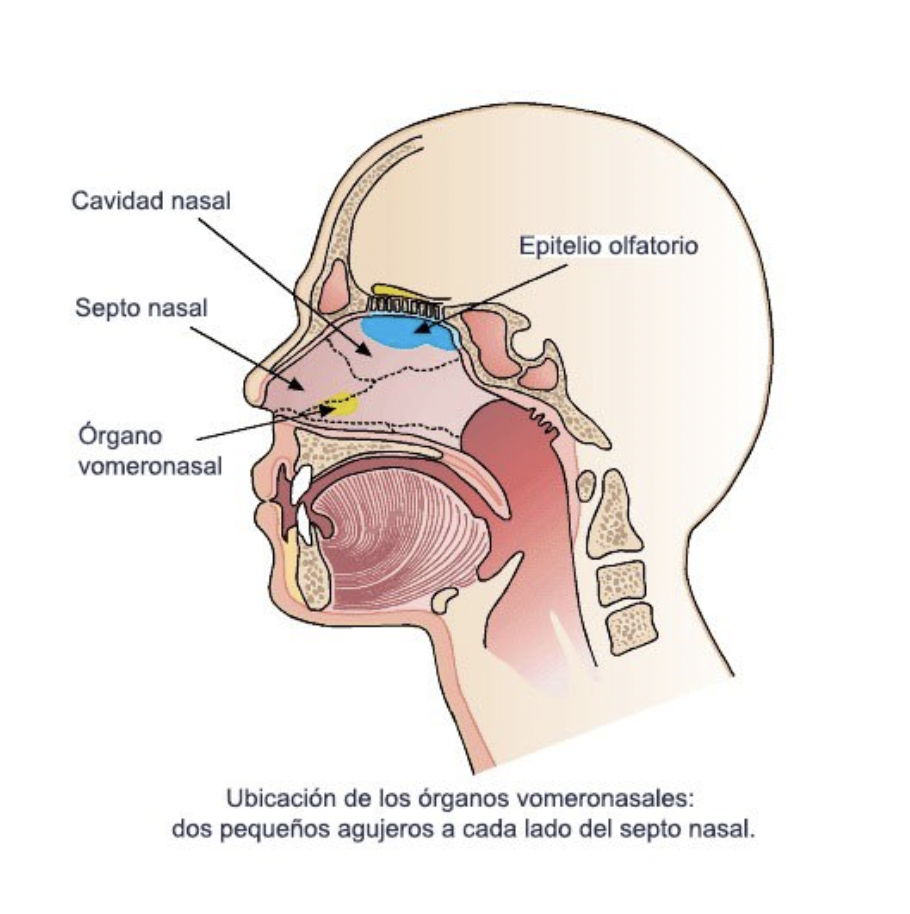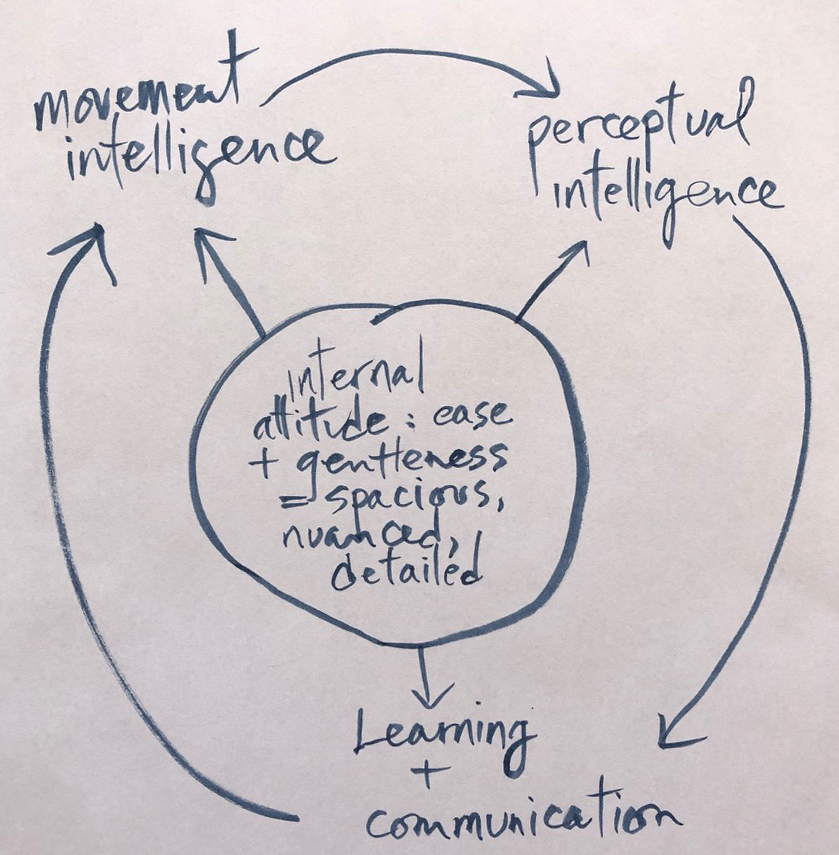Would you like to have easy access to free breathing, calm yet alert awareness, readiness for movement, and ease in your posture? I invite you to come with me on a new educational journey that will last for one entire year. I’ll be making one video per month and writing newsletters once a week on related topics.
We will start at the front of the brain and work our way down into the brain stem. I’ll guide you in an exploration of each cranial nerve, giving you visual images to stimulate imagination and awareness, and explorations that connect each nerve with somatic experience, postural rebalancing, and ease of movement.
There are 13 cranial nerves, though what you’ll find in most anatomy books is 12. Today’s video and newsletter introduce the first, most recently re-discovered vomeronasal organ in humans and its cranial nerve, which is often called vestigial because it is so delicate in structure. If they had given it a number, we would have to re-write all the anatomy books! I like to call it Cranial Nerve 0 for fun, but officially it’s called “N.”
I’m going on this journey because I’m discovering so much from it about the the core of the Alexander Technique, which proposes that all human activity is more effectively coordinated when our head is balanced freely on our spine. One obvious reason that this might be the case is that so many of our guiding sense organs are in our head, and the more easily and freely it moves, the more detailed, accurate and subtle sense information we receive.
Each of these 13 nerves has a separate and distinct function in your coordination and expression. Some are purely sensory, others are purely motor, and some are a combination of both. They all tend to get glommed together in the blob we think of as our “head” – but I’ve found it amazing to spend time with each one separately as well, because our senses and movement can get blurred by the lack of distinction. A common habit I can give as an example is that if we are sighted, we tend to over-use our visual system and underutilize other organs.
When have you ever heard anyone complain about “nose strain?”
The vomeronasal organ is probably in constant dialogue with your subconscious mind. Its nature is to process pheromones – the chemical signals related to sexual arousal and other attraction or avoidance behaviors in animals. There is much debate about whether humans process and respond to these chemical molecules – but my interest is just in the fact that we have this organ, and a nerve that still carries some information from the organ to our brain. Vestigial or not, it’s still a part of us.
It’s in cartilaginous tissue of the nose, rather than the bony sinus cavities between your eyes. If you lead the movement of your head from this mysterious organ, it’s lower down and further out in front of your body. I think of it is more mobile and a bit more mischievous. When I imagine it having a mind and interest of its own, I get curious about the air around me, the spaces just over my shoulder. I stop being so oriented towards the front and become aware of what’s to my sides and around behind me.
Here is an image that shows where the organ is, in relationship to the olfactory cells higher up between your eyes in your sinuses.

EXPLORATION:
Rest your sensory awareness on this more forward part of your nose as you breath in, and out.
– Does it slow your breathing down, or speed it up?
– Do you feel breath motion in other parts of your torso as well as your nose and sinuses?
– Does it affect the length of your exhale at all?
– Your inhale?
– What is it like to move your head from “interest in chemicals” at this place, instead of visual interest or sound? Is the balance of your head different in any way?
This is part of what I’ll be exploring in my weekly Mobile Body Alignment classes. Come and explore with us! HERE is a link to more information.


